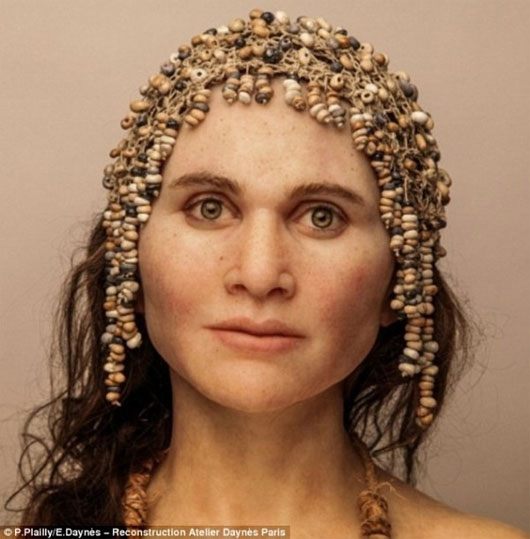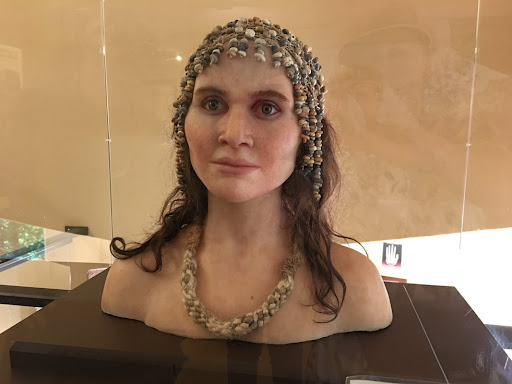Imagine standing face-to-face with a person who lived 15,000 years ago—before the rise of great civilizations, in an era vastly different from our own. This surreal experience has been made possible through the remarkable reconstruction of the Magdalena Woman, an ancient human whose skull was discovered in 1911 in a limestone cave in France. The face of this woman now serves as a poignant link to a distant past, offering a rare glimpse into the lives of early humans.
The Discovery and Initial Assumptions
The skull of the Magdalena Woman was initially assumed to belong to a young female, primarily due to the size of the pelvis, which suggested a female anatomy. Additionally, the skull revealed undeveloped wisdom teeth, which led to the initial belief that the individual was a young woman. As a result, the remains were named Girl of Magdalena.

However, further investigation, including X-ray scans, revealed a surprising twist. The wisdom teeth were found to be impacted, not yet erupted, which led to the conclusion that the individual was actually between 25 and 35 years old at the time of her death—much older than originally thought. This revelation shifted the understanding of her age and led to a deeper curiosity about who she really was.
Technological Advancements and Reconstruction
The skull had been damaged during its initial discovery and poorly restored in the past, leading to a distorted representation. However, thanks to modern technology, scientists were able to recreate the original features of the skull with greater accuracy. Advanced scanning techniques allowed for a detailed digital reconstruction of the skull, and French sculptor Elisabeth Daynes used this data to craft a stunningly lifelike model of the Magdalena Woman.
The result is a meticulously reconstructed face, showcasing a woman with high cheekbones, a delicate jawline, and an expression that is both serene and mysterious. Her smile, subtle yet enigmatic, draws comparisons to the famous Mona Lisa, whose smile has intrigued viewers for centuries. This feature has become one of the most captivating aspects of the Magdalena Woman’s reconstruction, providing a direct emotional connection to someone who lived in a world far removed from ours.
Life During the Upper Paleolithic
The Magdalena Woman lived during the Upper Paleolithic period, just before the end of the last Ice Age. This era was a transformative time for early humans. The harsh climate of the Ice Age was receding, and humans were beginning to transition from a nomadic hunter-gatherer lifestyle to more complex social structures and settlements. It was a time of great change and innovation, marked by the domestication of dogs—the first animal to be tamed by humans.

Her life in this transitional period suggests that she was part of the early wave of human adaptation to new environments and ways of living. The domestication of dogs, for instance, highlights the increasing interdependence between humans and animals, laying the groundwork for future agricultural and societal developments.
A Broader Perspective on Human Evolution
The Magdalena Woman’s story is more than just the reconstruction of a face—it is a piece of the broader story of human evolution. Her life offers insight into early human migrations, the development of social bonds, and the technological innovations that allowed early humans to survive and thrive. She is part of a long chain of ancestors who shaped the course of human history, carving out a space for themselves in an ever-changing world.
The Magdalena Woman represents an important link in the complex puzzle of our prehistoric ancestors. Her face helps us understand not only what people looked like but also how they lived, what they valued, and how they adapted to the challenges of their environment. By reconstructing her face, scientists and artists have given us a deeper understanding of early human experiences.
The Power of Technology and Art in Uncovering the Past
The rediscovery and reconstruction of the Magdalena Woman’s face underscore the incredible power of technology and archaeology in revealing the past. Advances in scanning technology, combined with the artistry of Elisabeth Daynes, have allowed us to breathe new life into a long-forgotten individual, making her part of the ongoing conversation about human history. This reconstruction not only provides a more accurate representation of the Magdalena Woman but also bridges the gap between the ancient and modern worlds.
Through these efforts, we now have the rare opportunity to look into the eyes of someone who lived so long ago. Her face offers us an emotional connection to our distant ancestors and serves as a reminder of the deep, shared history that connects us to the early human experience. The Magdalena Woman invites us to reflect on our origins, the journey of human development, and the many ways in which our past continues to shape who we are today.

